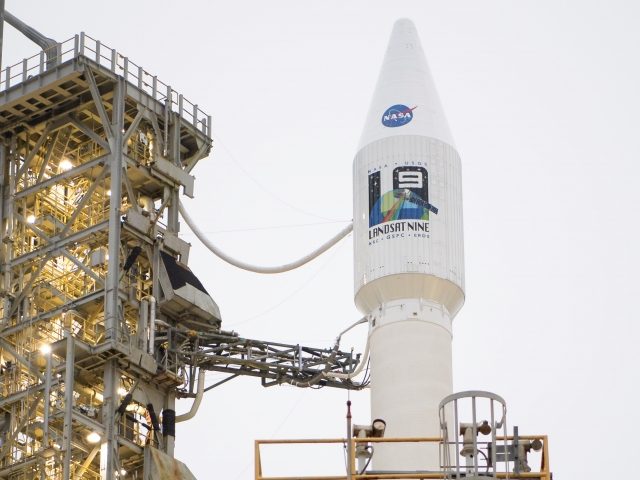NASA successfully launched a probe called ‘Lucy’ in the early morning on October 16. Lucy will analyze eight different asteroids over 12 years.
According to Reuters, NASA says the probe called “Lucy” lifted off from Florida’s Cape Canaveral Air Force Station at 5:34 a.m. on Saturday. Lucy, secured in a cargo capsule, took off with the assistance of an Atlas V rocket.
And we're off the ground! But we're not breathing easy yet. The #LucyMission depends on successful deployment of the solar arrays. That process is underway now, so stay tuned!
Posted by NASA Solar System Exploration on Saturday, October 16, 2021
Lucy’s lift-off marks the embarkment of a 12-year journey, during which the probe will study eight different asteroids, NPR reports.
The probe will analyze Jupiter’s Trojan asteroids during the journey, according to Reuters. The Trojan asteroids are two clusters that orbit the sun with Jupiter, one of which orbits ahead of the planet, while the other follows behind the planet. The largest of the Trojan asteroids are believed to be as large as 140 miles, or 225 kilometers in diameter.
The Trojan clusters are “thought to be remnants of the primordial material that formed the outer planets,” according to a Facebook post by NASA.
“The Lucy Mission hopes to expand our understanding of solar system evolution by visiting these 4.5-billion-year-old planetary ‘fossils,'” NASA says.
It is believed that the asteroids are robust in carbon compounds and may provide novel information about the formation of the planets, and possibly the development of life here on Earth, according to Reuters.
The man controlling Lucy’s black and white camera will be Hal Weaver of John’s Hopkins University, according to NPR.
“Are there mountains? Valleys? Pits? Mesas? Who knows? I’m sure we’re going to be surprised,” Weaver said, according to NPR. “But we can hardly wait to see what … images will reveal about these fossils from the formation of the solar system.”
The probe was named after the 3.2 million-year-old skeletal remains found in Ethiopia during a 1974 expedition led by Donald Johnson, according to Reuters. The remains were named Lucy after the hit Beatles song “Lucy in the Sky with Diamonds.”
Fittingly, the probe Lucy will fly-by the Donaldjohnson asteroid, named for the lead discoverer of the skeletal remains in Ethiopia, according to Reuters. The asteroid is situated in the solar system’s primary asteroid belt.
NASA says the probe’s route will take Lucy around Earth three different times in order to gain gravitational assists, according to Reuters. It will become the first spacecraft to reenter the Earth’s vicinity after reaching the outer solar system.
Lucy will orient itself with the use of rocket thrusters and carries two large solar arrays, Reuters reports. The solar arrays will be used to recharge batteries of small instruments that are part of the probe.
The #LucyMission spacecraft has successfully deployed its solar panels, and now its epic journey to Jupiter's Trojan…
Posted by NASA Solar System Exploration on Saturday, October 16, 2021

COMMENTS
Please let us know if you're having issues with commenting.